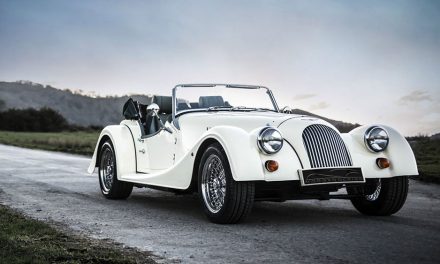WITH the automotive world definitely swinging to electric power, it’s logical the future of motorsport lies in the same direction.
It’s called Formula E and it’s about to enter its fifth year on the world calendar, with races in 13 cities on five continents for the ABB FIA Formula E Championship.
The all-electric racers are also a welcome change from Formula 1 Grands Prix, which, like it or not, have lost much of the sport’s prestige – and its fans.
Spectators are tiring of the petulance of F1’s grossly overpaid Vettel-Hamilton-Verstappen brat pack, the ever-changing rules on tyres and techno-tripe and the pitstop strategies that many see as unwarranted interference.
Holding it together for F1 is Australia’s Daniel Ricciardo, Mexico’s Sergio Perez, Germany’s Nico Hulkenberg and a couple of other quiet achievers whose behaviour and attitude to their sport is beyond reproach.
But it can’t last.
When Ricciardo was in Perth a few months ago to present his Canadian GP-winning Red Bull Renault t the WA Motor Museum, I asked if he’d be in Formula E in the next few years.
‘Formula E? That’s a good question,’ he said.
‘I don’t know. I hope not, but they’re getting really fast.
‘I hope the engines as we know them in F1 will continue, but I can’t say.’

Formula E, which has cars that look very F1-like, has attracted entries from Audi Sport, BMW, Jaguar Land Rover, DS Automobiles, Mahindra, Mercedes-Benz, Nissan, Porsche, NextEV NIO, Penske Autosport and France’s Venturi Automobiles.
The cars are all identical in design and construction, the one for the coming season dubbed the Gen 2.
They will take over from the five-year-old Spark-Renault SRT_01E, and will also be built by Spark Racing Technologies, with a crucial change being a McLaren-developed battery.
Reflecting the rapid advances in electric technology, the new battery will last for the entire race, .
Previously, drivers had a mid-race car swap, eliminating the need for a mid-race battery swap.
‘With the support of so many manufacturers, Formula E will continue to push the development of electric vehicle technology, and this car is an important milestone in this journey,’ FIA President Jean Todt said.
Drivers will have 200kW available for the race, but will be able to use an extra 25kW while passing through a single activation zone on each circuit.
The two power modes will be indicated using different colours on a LED strip on the halo cockpit protection devices.
Also adding to Formula E’s appeal is that the close racing is done on city streets, making the spectacle much more accessible than trips to distant purpose-built racing circuits.
Many a former F1 driver figures in the FE ranks, among them Nelson Piquet Jr, Nick Heidfeld, Jerome d’Ambrosio, Daniel Abt, Nico Prost, Stephane Sarrazin and ex-Toro Rosso stars Jean-Eric Vergne and Sebastien Buemi.
The new season will include 13 races in a dozen cities, starting in Saudi Arabia in December and finishing in New York in July.
Other venues include Berlin; Hong Kong; Marrakesh, Morocco; Mexico City; Monaco; Paris; Rome; and Zurich. A yet-to-be-announced city in China will host a race on March 23
Technical specs for the Gen 2 car include a minimum mass of 900kg for car and driver, maximum power of 200kW with 250kW maximum power regeneration, a limit of 54kWh from the battery to the MGU (electric motor), acceleration to 100km/h in 2.8 seconds, top speed of 280km/h, Brembo brakes and 18-inch Michelin Pilot Sport tyres.
All those cars, similarly powered and driven by some of the best wheelmen on the planet, make for exciting racing.
Electrifying, some might say.







